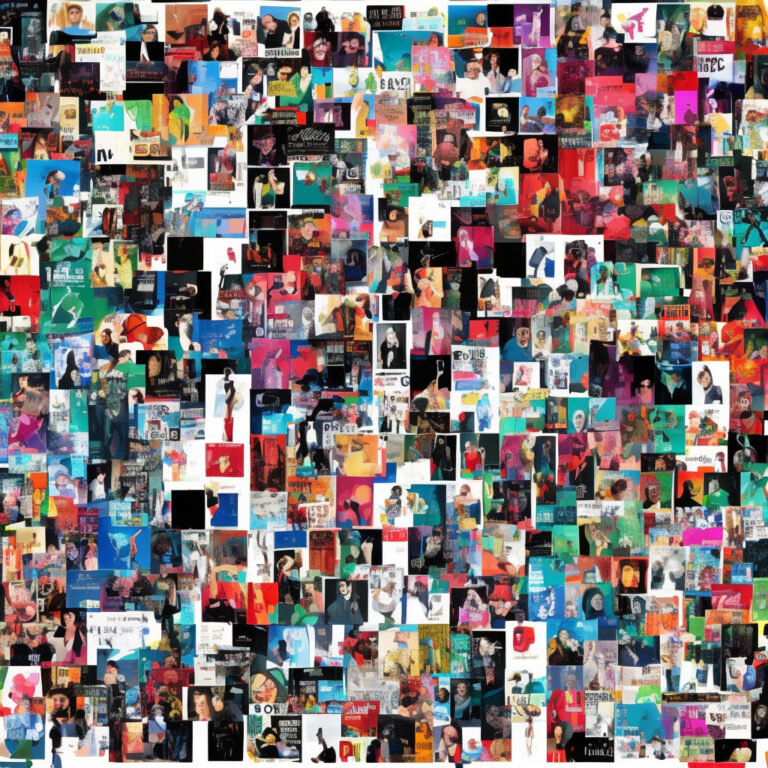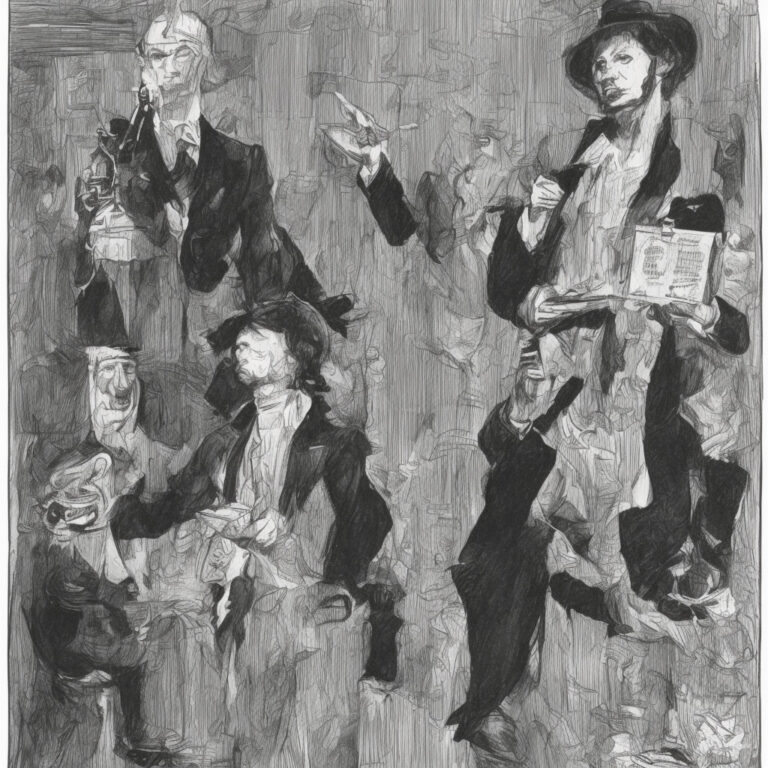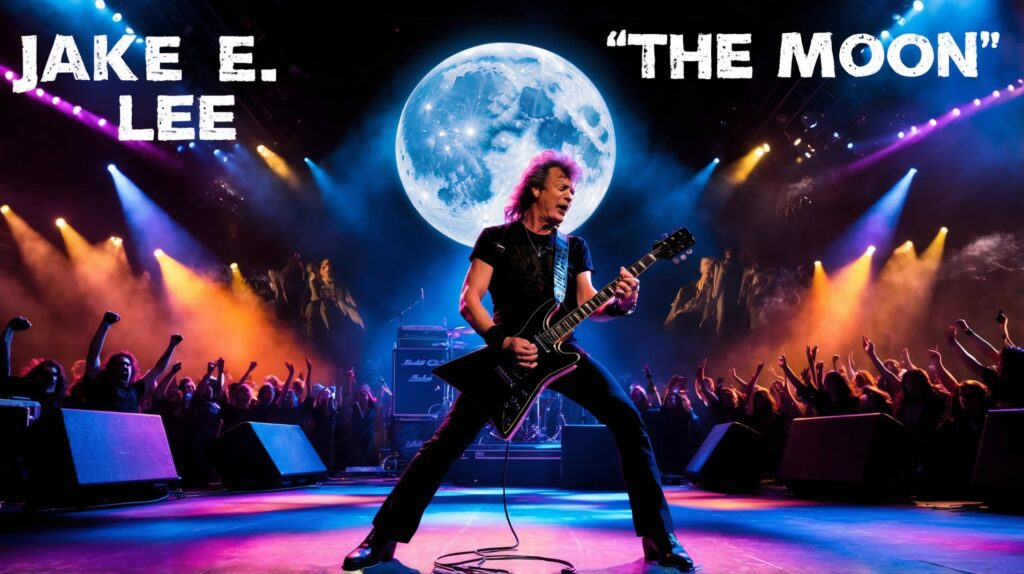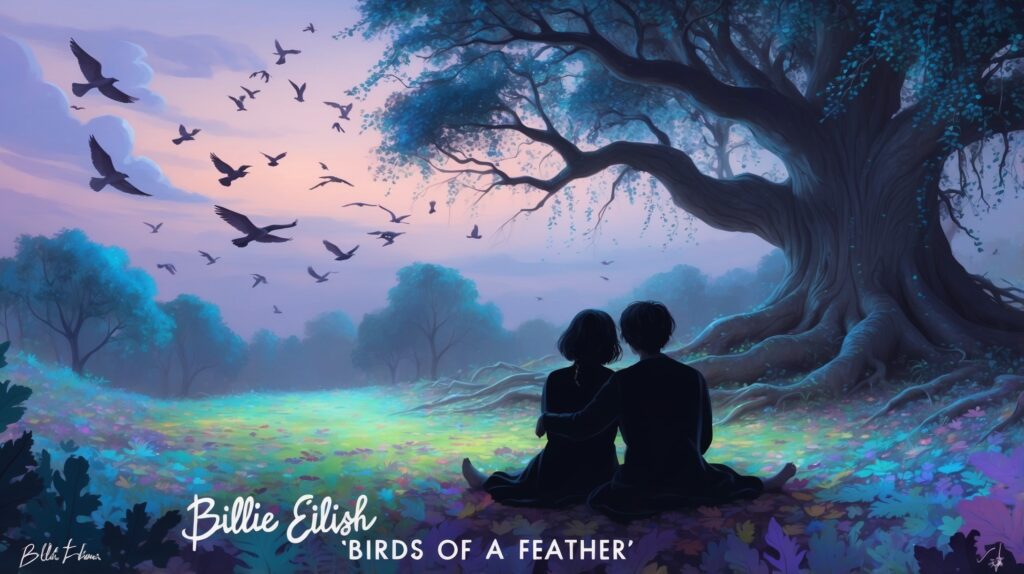? Did you know? #Beck’s iconic ’90s hit “Loser” was born out of a spontaneous jam session! ? With its catchy chorus and unique blend of genres, it’s no wonder we’re still singing it today ?? #Loser #FunFact #MusicTrivia #90sVibes Read about it: tinyurl.com/33myt7ke
From lo-fi slacker anthem to alternative rock icon: Beck’s ‘Loser’
“From accidental slacker anthem to alt-rock legend: Beck’s ‘Loser’ proves that experimentation pays off in the ever-evolving world of music.”

Although arguably one of the most memorable tracks of the ’90s alternative rock scene, Beck’s “Loser” initially started as a fluke. Beck, a multi-instrumentalist and genre-blending artist, began his career by experimenting with different styles, from folk and blues to hip-hop and electronic. Born Bek David Campbell in 1970, the Los Angeles-based musician adopted the stage name Beck Hansen and released his first album, “Golden Feelings,” in 1993. However, it was his first major-label single, “Loser,” that skyrocketed Beck to fame.
The song originated from a collaboration with producer Carl Stephenson, who provided the now-iconic slide-guitar sample and drum beat. Beck’s idiosyncratic lyrics, infused with self-deprecation and humorous wordplay, resonated with Gen-X listeners who embraced the song as a slacker anthem. Released in 1994, “Loser” became a massive hit and peaked at No. 10 on the Billboard Hot 100 chart. The track’s success helped propel Beck’s major-label debut album “Mellow Gold” to platinum status in the United States.
Beyond the success of “Loser,” Beck’s career spans over 14 albums featuring his distinct amalgamation of various genres. His ever-evolving sound has garnered him a dedicated fanbase and critical acclaim. Throughout the years, Beck has been nominated for numerous awards, winning six Grammy Awards, including Album of the Year in 2015 for his introspective folk-rock record “Morning Phase.” However, it is worth mentioning that the artist’s discography isn’t without its missteps. Some critics argue that Beck is a musical chameleon, shifting his sound to fit different trends, which can make his output feel less genuine at times.
The impact of “Loser” on the ’90s alternative rock landscape cannot be overstated. While the song might have been a product of experimentation, it showcased Beck’s penchant for blending various musical styles and his ability to connect with listeners through his self-aware lyrics. Despite the song’s tongue-in-cheek nature, its success paved the way for Beck’s illustrious career, leaving an indelible mark on the history of alternative music.
Charting the Success of a ’90s Anthem
Riding the ’90s wave, Beck’s genre-bending anthem “Loser” conquers charts worldwide, propelling the artist to global fame and solidifying the track’s place in music history.

Released on March 8, 1993, “Loser” became an unexpected hit for Beck, quickly rising through the ranks and taking over the airwaves. Initially self-released on Bong Load Custom Records, the song’s catchy hook, unique blend of genres, and intriguing lyrics caught the attention of Geffen Records, who signed Beck and re-released the single in 1994.
Upon its re-release, “Loser” entered the Billboard Hot 100 chart on January 29, 1994, debuting at position #92. The song quickly gained momentum and found itself peaking at #10 on the chart during the week of April 16, 1994. Additionally, “Loser” achieved significant success on the Modern Rock Tracks chart where it spent five weeks in the top spot between March 26 and April 23, 1994.
The song’s chart success wasn’t limited to the United States, as “Loser” also made its way onto international charts. In Canada, the song peaked at #7 on the RPM Top Singles chart, while in Australia, it reached #8 on the ARIA Singles Chart. “Loser” even found success across the ocean, with the song breaking into the UK Singles Chart and peaking at #15.
An interesting piece of chart trivia: “Loser” is one of the few songs to have achieved such success while having a mostly Spanish-language chorus. This unique aspect of the track contributed to its widespread appeal and memorable status as a ’90s hit.
Throughout its chart run, “Loser” solidified itself as a defining song of the decade, and its success undoubtedly propelled Beck into the mainstream, paving the way for his long and diverse career.
Dissecting the Lyrics and Cultural Context
In the time of chimpanzees, I was a monkey
Butane in my veins and I’m out to cut the junkie
With the plastic eyeballs, spray-paint the vegetables
Dog food stalls with the beefcake pantyhose
Kill the headlights and put it in neutral
Stock car flaming with a loser and the cruise control
Baby’s in Reno with the vitamin D
Got a couple of couches, sleep on the love seat
Someone came in saying I’m insane to complain
About a shotgun wedding and a stain on my shirt
Don’t believe everything that you breathe
You get a parking violation and a maggot on your sleeve
So shave your face with some mace in the dark
Saving all your food stamps and burning down the trailer park
Yo, cut it
Soy un perdedor
I’m a loser baby, so why don’t you kill me?
(Double barrel buck-shot)
Soy un perdedor
I’m a loser baby, so why don’t you kill me?
Serving as a prime example of anti-folk and alternative rock, “Loser” by Beck thrived in the early 1990s, a time when disillusionment and cynicism swept through the western youth. The lyrics of the song are a kaleidoscope of seemingly nonsensical imagery that actually hits close to home in dissecting the spirit of the time.
The song speaks to the pervasive sense of disenchantment felt by many during this era, while also capturing the movement towards self-deprecation in popular music. The repeated refrain, “Soy un perdedor / I’m a loser baby, so why don’t you kill me?” encapsulates the jadedness many felt as they struggled to find meaning and purpose in a rapidly changing world. In its essence, it is an anthem for the outcasts and misfits who find solace in their self-awareness.
The song’s distinctive combination of surreal and chaotic imagery, such as “butane in my veins” and “spray-paint the vegetables,” is reflective of the disjointed reality faced by various members of society in the 1990s. Furthermore, the references to “shotgun weddings” and “burning down the trailer park” touch upon the darker aspects of life, resonating with feelings of despair and disillusionment that pervaded the era.
In conclusion, “Loser” by Beck stands as a cultural artifact of the 1990s, reflecting the underlying sense of aimlessness and disaffection felt by many during that time. The song serves as a reminder that, amidst the chaos and confusion of life, one can still find comfort in knowing they are not alone in their struggles. The lyrics of “Loser” perfectly capture the zeitgeist of a generation searching for meaning in the face of an uncertain future.
The Eclectic Visuals of “Loser” Music Video
“Loser” music video: a low-budget, surreal masterpiece showcasing Beck’s innovative spirit & artistic prowess with a lo-fi, DIY visual experience.
The music video for “Loser” by Beck is as eclectic and eccentric as the artist himself. Directed by Steve Hanft, known for his work with bands like Radiohead and The Stone Roses, this low-budget video aligns with the DIY ethos that Beck truly embodies. Shot in black and white with occasional bursts of color, the visuals perfectly compliment the alternative hip-hop and indie rock fusion of the song.
The “Loser” music video showcases a series of surreal and bizarre scenes that were pieced together using a variety of filming techniques. These include stop-motion animation, time-lapse photography, and found footage, all of which contribute to the video’s unique aesthetic. With a budget of approximately $300, the music video was created on a shoestring, further proving that artistry and creativity can triumph over high production costs.
The video features scenes such as Beck playing guitar in the back of a truck, dancing and rapping with a cow skull mounted on a pole, and even a scene of a coffin being dragged through a field. These visuals are interspersed with footage of people wearing strange masks and engaging in inexplicable activities, which adds to the video’s overall sense of surrealism and disjointed reality.
The artistic approach taken by Hanft, who would later collaborate with Beck on other music videos as well, highlights the song’s message of feeling like an outsider and embracing one’s own quirks. It matches the chaotic beat of the song and the quirky, obscure lyrics that became Beck’s trademark.
In conclusion, the “Loser” music video serves as a testament to Beck’s innovative spirit and artistic prowess. The video’s lo-fi aesthetic, surreal imagery, and unconventional storytelling have helped it to become a cult classic that stands the test of time. So, watch the music video, and you will see why it remains an unforgettable piece of 90s alternative culture.
The Mastermind Behind “Loser”: Beck Hansen
The genius composer behind the iconic song “Loser” is none other than Beck Hansen, a multifaceted artist whose creativity knows no bounds. Born as Bek David Campbell, this American musician, singer, and songwriter has been making waves in the industry since the early 90s. Beck’s musical versatility is evident in his many notable compositions, often blending elements of folk, funk, soul, and alternative rock, among other genres.
One of Beck’s most prominent pieces, aside from “Loser,” is the Grammy-winning “Where It’s At,” from his 1996 album, “Odelay.” This critically acclaimed album marked a turning point in Beck’s career, showcasing his prowess in blending various musical styles and solidifying his status as an innovator in the industry. Other notable songs in Beck’s extensive discography include “E-Pro” from his 2005 album “Guero,” “Blue Moon” from the 2014 album “Morning Phase,” which won a Grammy for Album of the Year, and “Wow,” a single from the 2017 album “Colors.” These songs, along with many others, highlight Beck’s unique ability to push the boundaries of music, reinvent his sound and captivate listeners time and time again.
Award-Winning Legacy and Impact on Pop Culture
Beck’s “Loser” transcends time with its award-winning legacy, infectious pop culture presence, and diverse artistic reinterpretations.

“Loser” stands as one of Beck’s most successful and highly acclaimed songs since its release in 1994. The track was not only a massive commercial success, but also garnered critical recognition, earning a Grammy nomination for Best Rock Vocal Performance, Solo, and a spot on the VH1 list of the 100 Greatest Songs of the ’90s, where it ranked at number 20.
The lasting impact of “Loser” can be seen through its various appearances in movies, television shows, and even video games. The song played a prominent role in the 1997 hit film “A Life Less Ordinary,” which starred Ewan McGregor and Cameron Diaz. Additionally, it has been featured in numerous TV series, such as “House M.D.,” “Beavis and Butt-Head,” and more recently, “The Simpsons.” Its infectious chorus and catchy beat even made it a suitable choice for the soundtrack of the immensely popular video game, “Rock Band.”
“Loser” has spawned numerous cover versions over the years, each putting their own unique spin on the track. Acclaimed artists like Richard Cheese and Chris Cornell have offered their interpretations of the song, with Cornell infusing it with his signature grunge-rock sound during live performances. Various indie bands and unknown musicians have also covered “Loser,” highlighting its lasting appeal and influence in the music world.
Not only has “Loser” continued to thrive in popular culture, but it has also been subject to countless remixes and mashups, further showcasing its versatility and the creative possibilities it offers to other artists. Through these mediums, the legacy of “Loser” has remained alive and well, solidifying its position as a true classic in the realm of alternative rock history.
Diving Deeper into the Musical Structure
Diving deeper into the musical structure of “Loser,” it’s evident that the song is written in the key of G minor. The chord progression throughout the majority of the track features a simple and repetitive sequence of Gm, Eb, and Bb. This repetitive nature of the chord progression adds to the hypnotic and catchy nature of the tune.
The song features a moderate tempo, clocking in at around 85 beats per minute (BPM). This tempo is a perfect pacing for the laid-back, slacker vibe that the song exudes. The song’s rhythm structure is primarily built on a looped drum sample from Johnny Jenkins’ version of Dr. John’s “I Walk on Guilded Splinters.” This sample provides a distinctive, steady groove that lays the foundation for the rest of the track.
The verse sections of “Loser” consist of a simple two-bar melody, with the vocal line following the Gm pentatonic scale. The chorus, on the other hand, utilizes a more melodic and harmonically rich progression. The harmonic structure of the chorus shifts to Gm, F, Eb, and Bb, providing a sense of resolution and contrast to the verses’ minimalistic approach.
One of the most notable aspects of the song is the use of unconventional instrumentation and sound effects. Beck employs a combination of slide guitar, sitar, and various samples, which add to the song’s unique sonic texture. The slide guitar, in particular, contributes to the song’s distinctively laid-back, bluesy vibe. Additionally, the use of delay and reverb effects on the vocals and guitar create a sense of spaciousness and depth within the mix.
The song’s structure follows a somewhat traditional pop format, with an intro, verses, choruses, and a bridge. However, Beck’s experimental approach to layering and blending different sounds and musical elements sets “Loser” apart from standard pop fare. The seamless integration of hip-hop, blues, and psychedelic influences showcase Beck’s ability to synthesize various genres into a cohesive and captivating sound.
Overall, the musical structure of “Loser” is a testament to Beck’s ability to combine simplicity and complexity, resulting in a song that remains fresh and engaging despite its repetitive nature. The unconventional instrumentation and genre-blending demonstrate Beck’s innovative spirit and willingness to push the boundaries of popular music.







